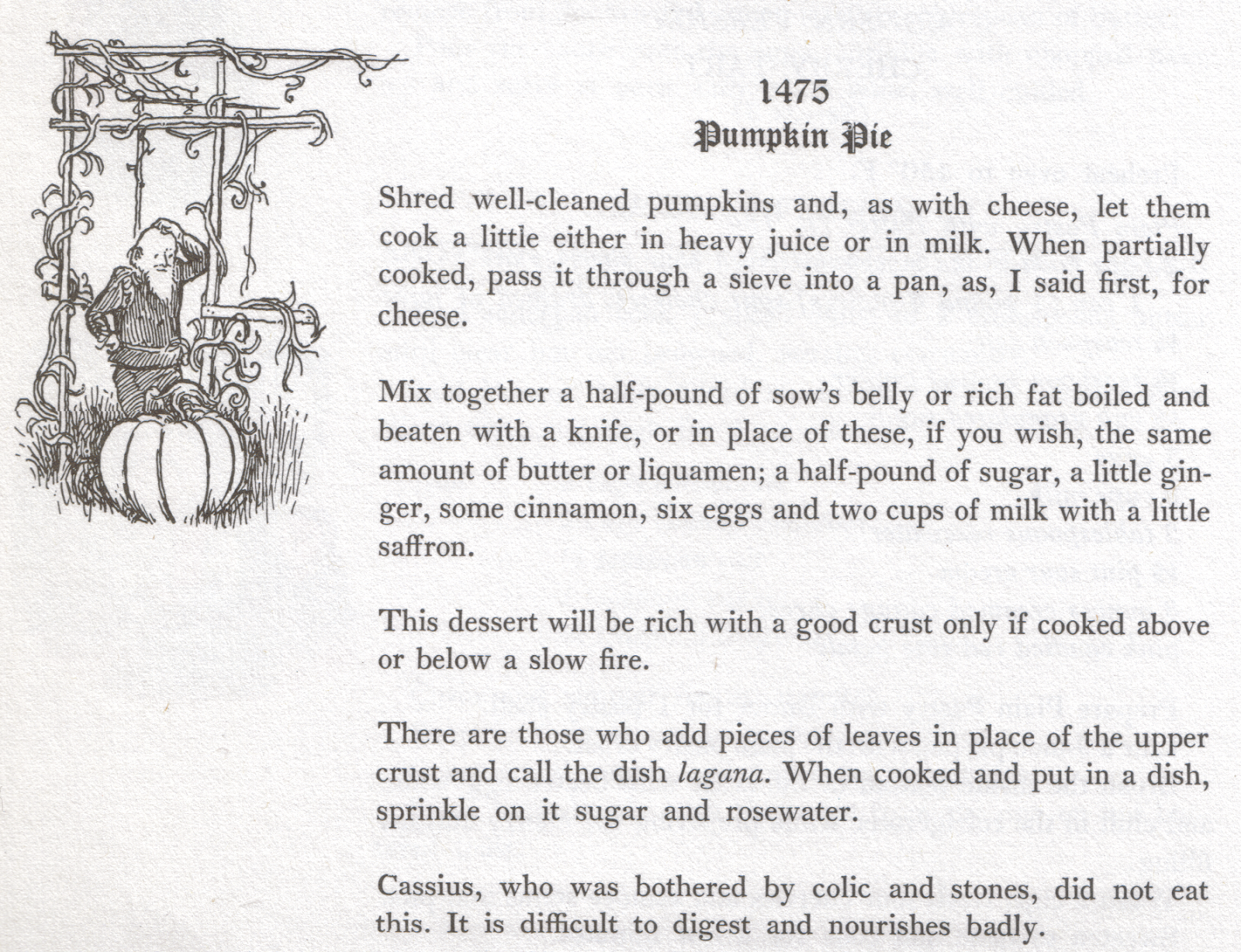It's the height of pumpkin season-- just past the jack-o-lantern stage and into the pie stage, with pumpkin pie's big day just over a week away. What did pumpkin pie look like in the past? Today I have some seriously old pumpkin pie recipes for you.
This first is a translation that was originally from
De Honesta Voluptate et Valetudine (
Of Honest Voluptuousness and Health) by Platina in 1475. Obviously, I don't have the original! The recipe is from Margaret Rudkin's
Pepperidge Farm Cookbook (1963). So how did one go about making a pumpkin pie in 1475?
First, get an old bald guy with a beard and a slightly bemused expression to fetch an enormous pumpkin.
Then, shred the pumpkin and cook in a little heavy juice (whatever that may be). Mix sieved mixture with "a half-pound of sow's belly," butter (or
liquamen, apparently a fish sauce!), sugar, ginger, cinnamon, six eggs, two cups of milk, and saffron. (I'd never seen saffron listed as an ingredient in pumpkin pie before, and I have to admit I'm a little intrigued. I had saffron ice cream one time, and it was softly floral and lovely. I'll bet saffron would be good in pumpkin pie, if a bit too expensive for everyday use.) (I'm really not sure about saffron in pumpkin pie if it's made using a fish sauce, though! With butter, sure...)
I love the way there are no measurements for the main ingredient-- pumpkin-- while many of the lesser ingredients get measurements. The writers trusted cooks to know what they were doing!
I also have to love a recipe that ends with the warning "It is difficult to digest and nourishes badly." There are sooo many recipes from the '50s, '60s, and '70s that deserved a warning! Apparently ending a recipe with a warning was out by then, though.
If you want a much more recent historical recipe, here is pumpkin pie from the 1896
Fannie Farmer Cook Book. (Mine is a 1996 facsimile-- I don't have the original for this one either!)
You'll notice that the pumpkin version is just listed as a variation of the squash pie. Now, most people would expect it to be the other way around, with pumpkin pie being the common version. I imagine squash pie was more popular then because it may have been easier to make. My grandma usually made squash pie (I think from acorn squash) because it was easier to cook and puree a squash than a pumpkin. Now that cheap canned pumpkin is everywhere, most of us don't know what a pain starting pumpkin pie from scratch was.
This version was probably pretty bland. For the entire pie, cooks were supposed to use only 1/4 teaspoon of one spice (choice of cinnamon, nutmeg, or ginger). If that was too spicy, one could substitute a 1/2 teaspoon of lemon extract! I can't really imagine a pumpkin pie without any pumpkin pie spices and just a hint of lemon instead. If YOU want to find out how bland this is, the cooking directions for Custard Pie are "Bake in quick oven at first to set rim," then decrease the heat afterwards to cook the rest of the pie through. Yes, this was also of the "cooks know what they're doing so we won't go into too much detail" mindset. Good luck!
I'm pretty sure I'll stick to the good old
Bisquick Impossible Pumpkin Pie. I love those to death!




























